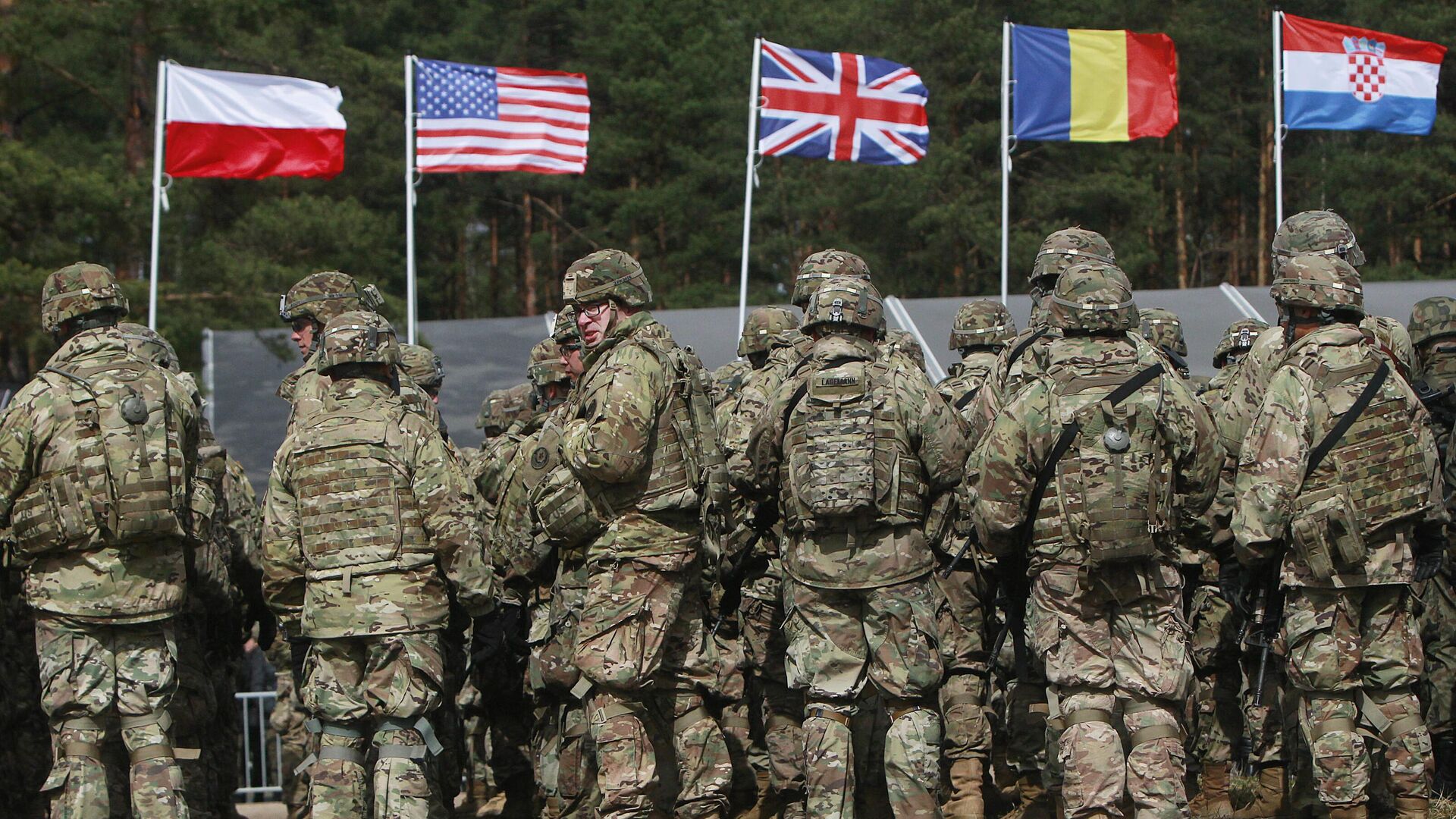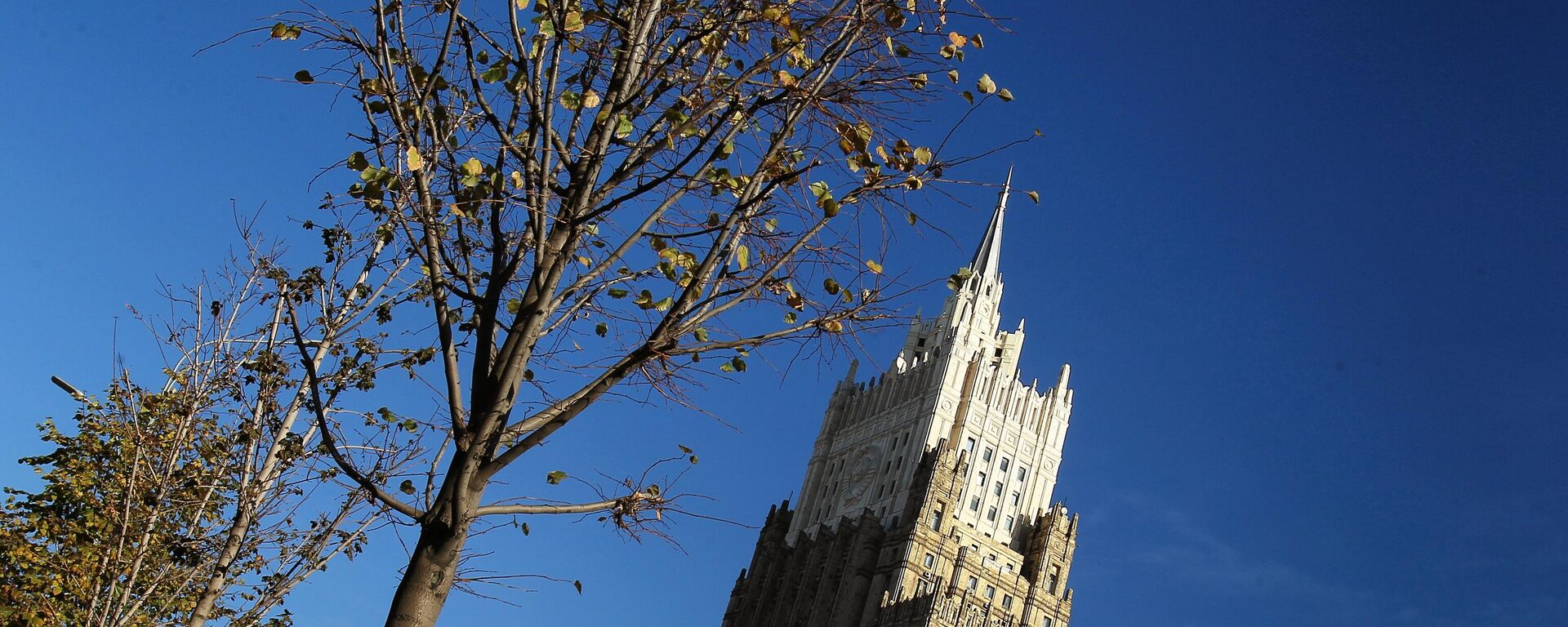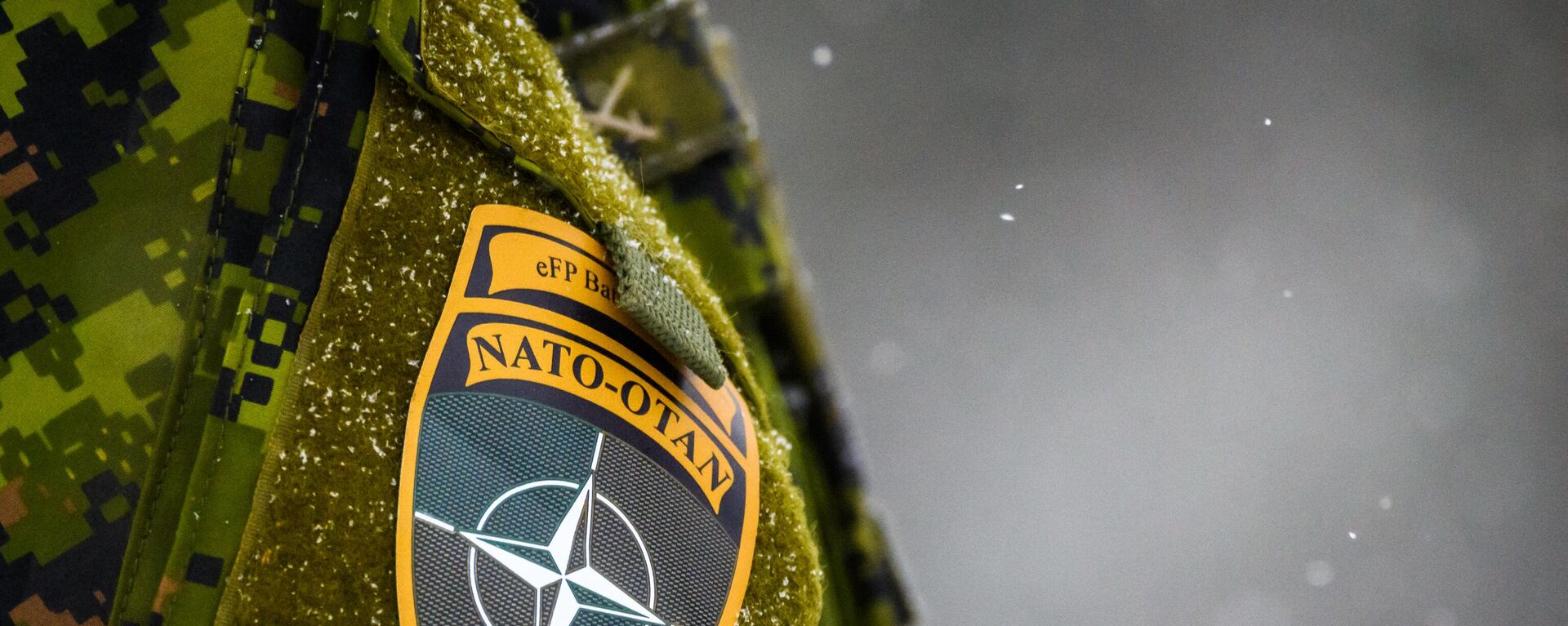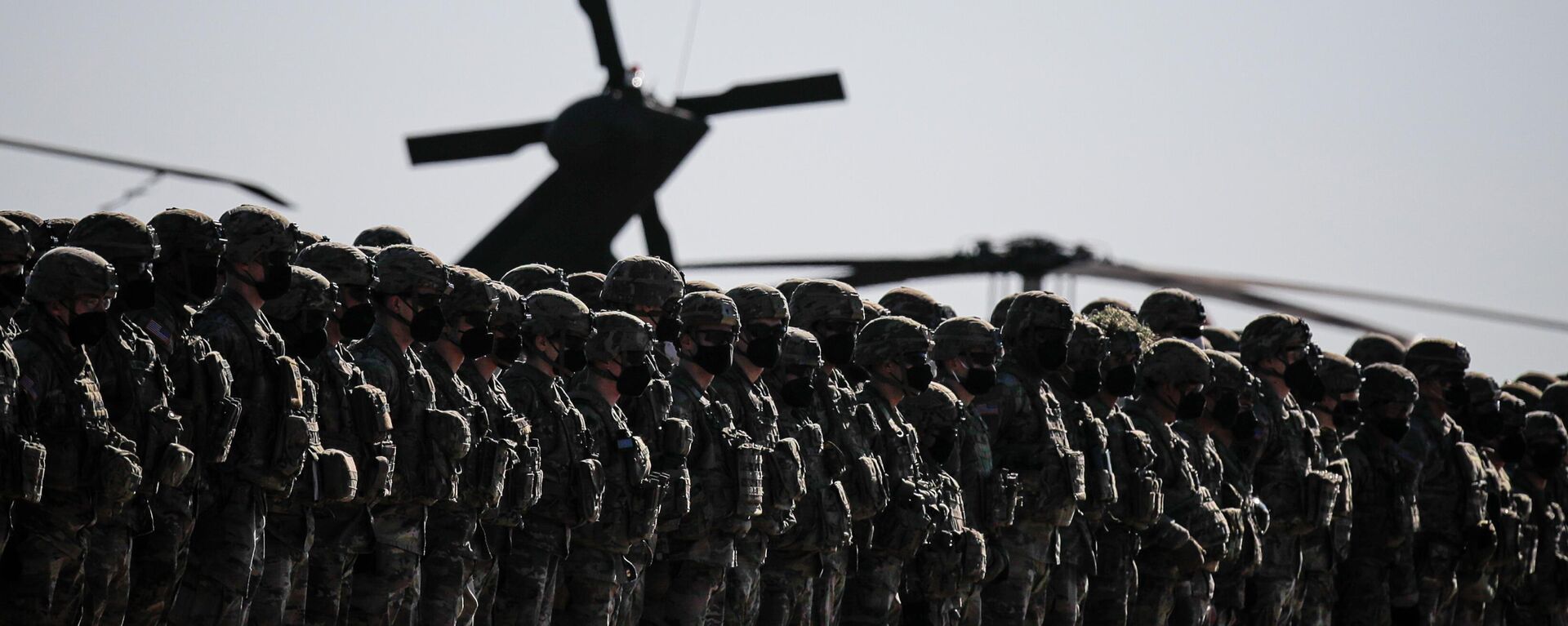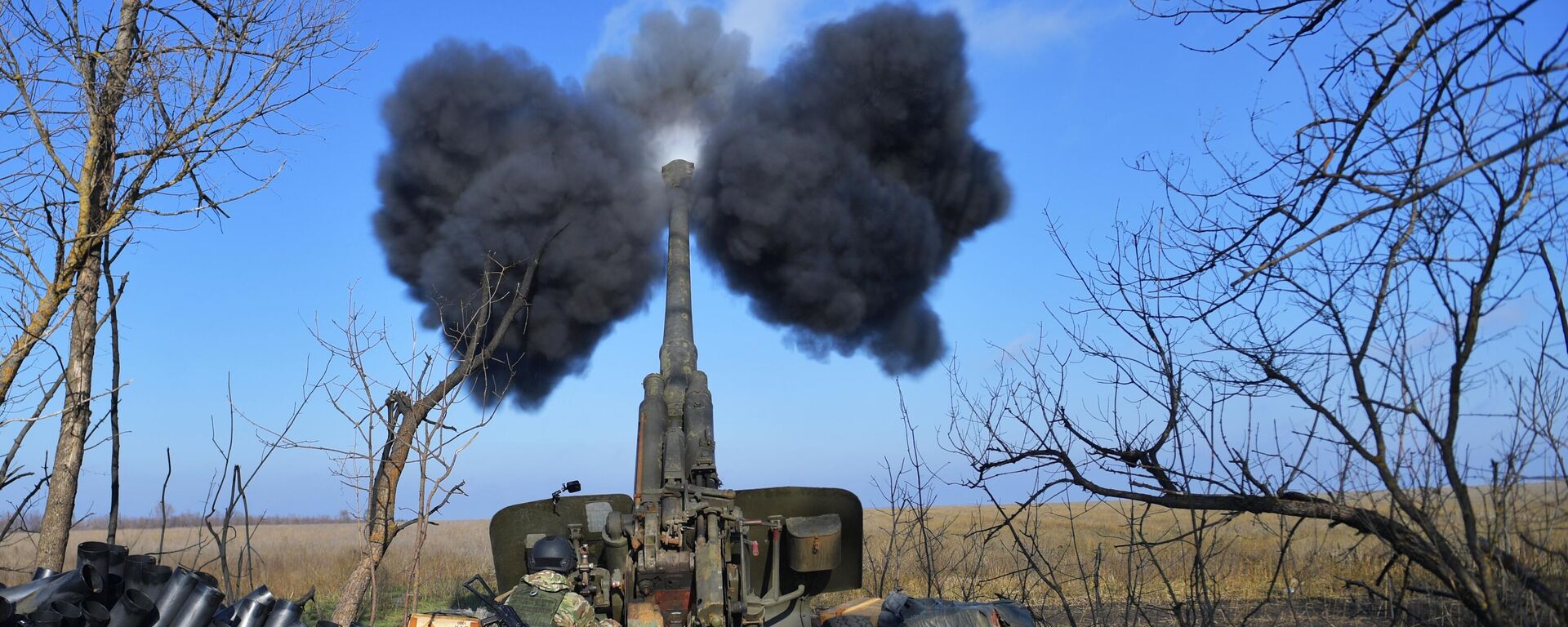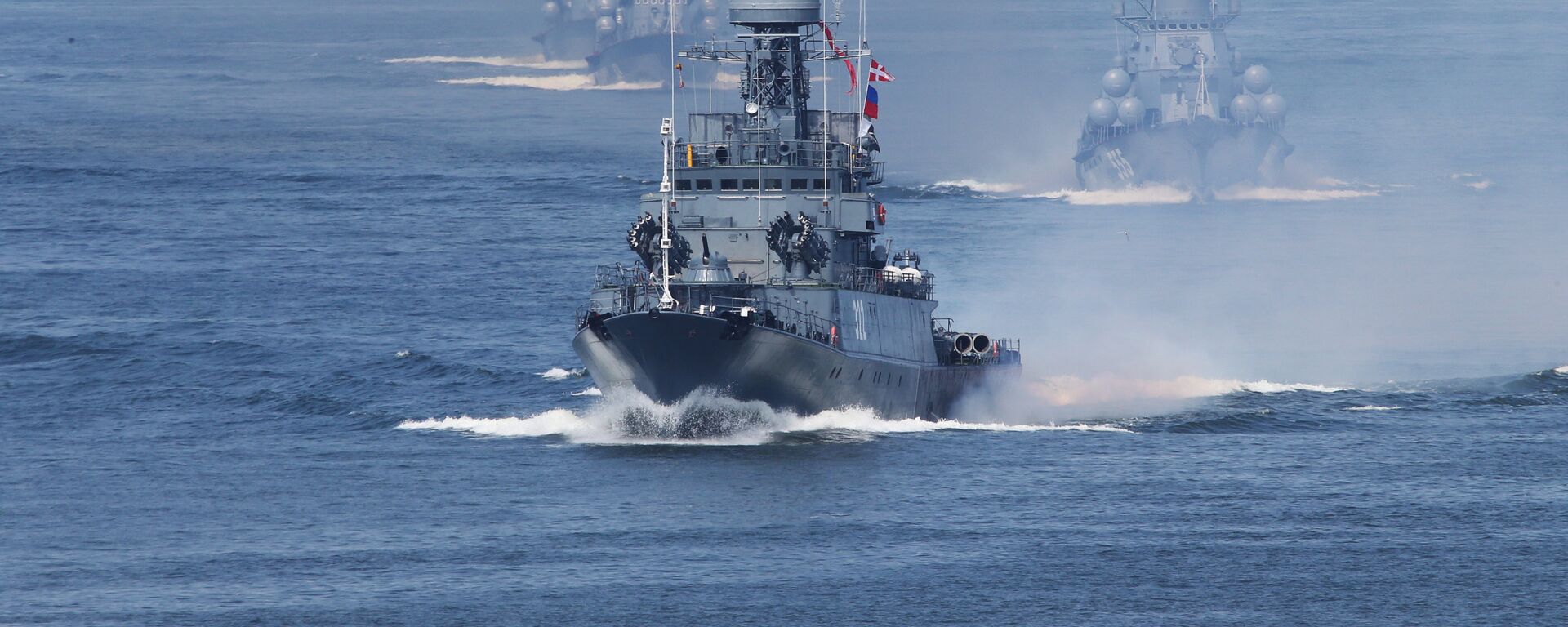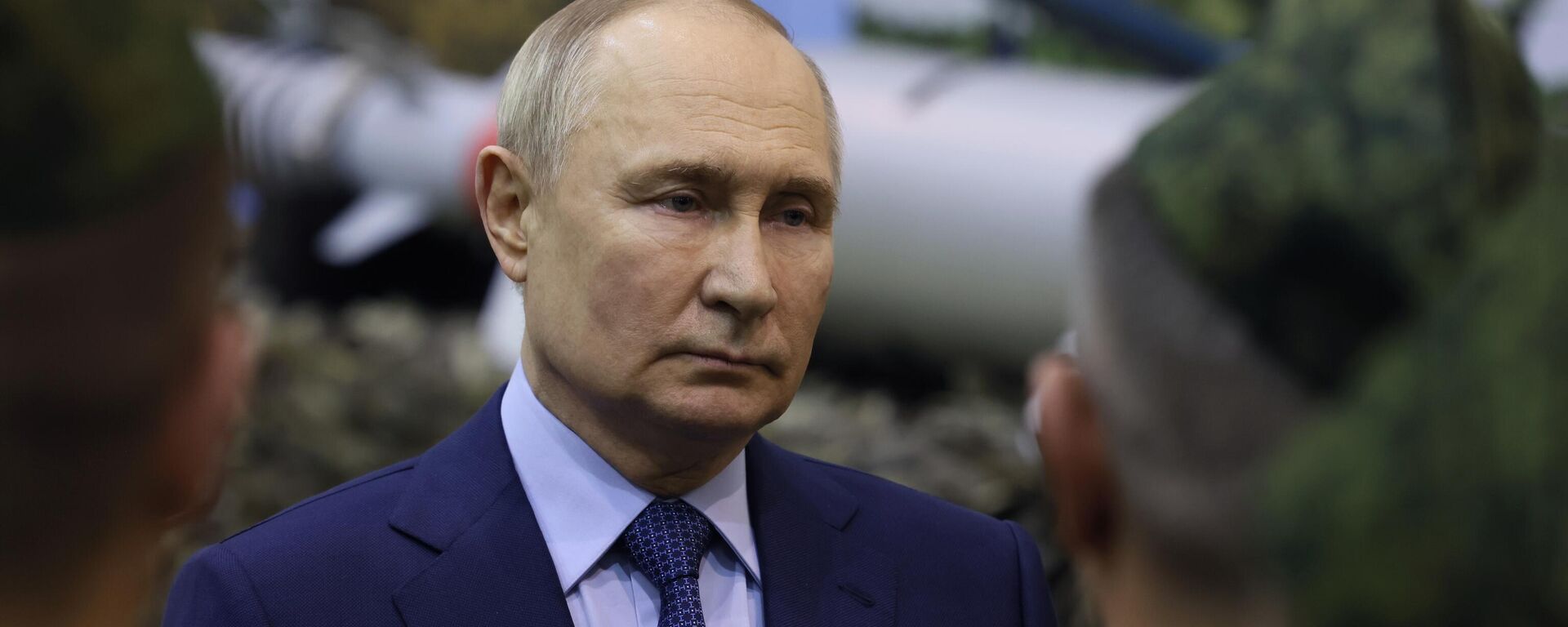https://sputnikglobe.com/20240329/natos-encirclement-of-russia-went-into-high-gear-under-20-year-game-plan-1117632683.html
NATO's Encirclement of Russia Went Into High Gear Under 20-Year Game Plan
NATO's Encirclement of Russia Went Into High Gear Under 20-Year Game Plan
Sputnik International
Twenty years ago NATO absorbed Bulgaria, Estonia, Latvia, Lithuania, Romania, Slovakia and Slovenia into a post-Cold War sweeping round of expansion. Now, the US-led bloc's activities in Eastern Europe and the Black Sea region directly threaten Russia.
2024-03-29T12:40+0000
2024-03-29T12:40+0000
2024-03-29T12:40+0000
george szamuely
viktor yushchenko
russia
black sea
ukraine
nato
russian foreign ministry
aegis
aegis ashore
opinion
https://cdn1.img.sputnikglobe.com/img/07e8/02/1a/1117001495_0:0:3208:1805_1920x0_80_0_0_dd617735d08e0cdd22f9f15f94009d75.jpg
NATO’s activities in Eastern Europe and the Black Sea region are part of preparations for a possible conflict with Moscow, the Russian Foreign Ministry told Sputnik on Thursday.The military bloc's buildup in Romania, Poland and the Baltic States is provocative and exacerbates military tension along the perimeter of the Russian borders and creates threats to the country’s security, according to the Russian Foreign Ministry.NATO's militarization of Eastern Europe and the Black Sea coast started intensifying since 2014, following the Maidan coup and the start of the war in Donbass, according to Dr. George Szamuely, senior research fellow at the Global Policy Institute and author of "Bombs for Peace: NATO’s Humanitarian War on Yugoslavia."NATO's Decades-Long Eastward MarchThe US-led military bloc embarked on its march eastward by inducting Poland, Hungary, and the Czech Republic as NATO members in 1999. In the next round of expansion – the fifth since the bloc's foundation – Bulgaria, Estonia, Latvia, Lithuania, Romania, Slovakia and Slovenia joined the alliance in 2004. The admission of the Western Balkan countries occurred between 2009 and 2020, while Finland and Sweden were absorbed by the alliance in 2023 and 2024, respectively, cementing NATO's presence in the Baltic Sea.In 2008, then NATO Secretary-General Jaap de Hoop Scheffer made a promise to Ukraine's pro-Western government led by Viktor Yushchenko that the Eastern European state would be admitted to the alliance. However, Ukraine found itself divided on the issue. The eastern regions of Ukraine were more inclined to maintain ties with Russia, which was strongly opposed to NATO's eastward enlargement. Russia viewed this expansion as a violation of the West's commitment to not move any closer to its borders following the end of the Cold War.The US-backed coup d'état of February 2014 changed everything, with the Kiev regime seizing power, silencing pro-Russian dissenters and unleashing a war on Donbass. Since then, NATO member states have cranked up their support for Ukrainian forces by providing training and weapons. In addition, a colossal number of CIA covert bases, 12 in all according to reports, were set up across the eastern European state.NATO also sought to ensure seamless movements of its forces across Europe including to its eastern flanks, peddling the creation of a so-called "military Schengen" zone in 2017. The bloc advocated dismantling physical, legal and regulatory/administrative obstacles within the EU to streamline the transportation of weapons and troops. This concept gained traction during the Ukraine conflict.Moscow's special military operation, which began in response to NATO's continuous enlargement and militarization of the regions bordering Russia, was used by the transatlantic military bloc as a pretext for further expansion.Since February 2022, NATO has reinforced the existing four battlegroups on its eastern flank and established four more multinational battalions in Bulgaria, Hungary, Romania and Slovakia, doubling the number of troops on the ground. As of February 2024, the number of NATO boots on the eastern flank's ground amounted to 150,000, according to Foreign Policy magazine.The US-led Transatlantic military bloc also beefed up its naval and air forces from the Baltic Sea in the north to the Black Sea in the south, in close proximity to Russia's borders.NATO’s Missile Defense in Europe Threatens RussiaSince 2014, the bloc has been focusing on enhancing its air and missile defense system in Eastern Europe, which is based on the US-made Aegis Weapon System (AWS). On May 12, 2016, the Aegis Ashore missile defense site in Deveselu, Romania was declared operational. A similar site in Redzikowo, Poland, was accepted into service by the US Navy on December 15, 2023. It is due to become operational under NATO command by the summer of 2024. The Redzikowo Air Base is located just 93 miles from the Russian exclave of Kaliningrad. Besides the Romanian and Polish sites, NATO's European air defense shield relies on mobile Aegis systems on five Arleigh Burke-class destroyers stationed by the US Navy in Rota, Spain.Since October 2022, Germany has spearheaded the creation of the European Sky Shield Initiative (ESSI), an integrated air-defense and anti-missile system, with a clear reference to Russia as a "threat". While 19 European NATO members jumped on Berlin's bandwagon, France, Italy, Poland, Spain, and Turkiye have so far refrained from joining. The system would include Germany's IRIS-T, America's Patriot, and Israel's Arrow-3 systems and be integrated with NATO's existing defense shield. The Western press admits that the Arrow 3 poses a direct challenge to Russia due to the system's extended range and hypersonic capabilities.NATO Expanding Presence in the Black and Baltic SeasHaving admitted Finland and Sweden, NATO has turned the Baltic Sea into the alliance's "lake." In addition, the military bloc has started to expand the Romanian Air Force 57th Air Base Mihail Kogalniceanu which would accommodate up to 10,000 NATO soldiers, new runways and weapons platforms. Located near the Black Sea port of Constanta, the expanded base would be located around 80.1 miles from Ukraine's border and around 186 miles from the port city of Odessa.Once the base is built, Crimea, the Sea of Azov and its coast as well as Russia's Krasnodar region would be within its striking range, Leonid Reshetnikov, a retired lieutenant general of Russia's Foreign Intelligence Service (SVR) warned Sputnik earlier this month."And that was the goal of Victoria Nuland, that [the US] want[s] Crimea. That's why Russia's move in 2014 to ensure the reincorporation of Crimea into the Russian Federation was a major blow for NATO because that was always the prize," the researcher continued.NATO's End Game: What is it?Make no mistake, NATO's eastward expansion has never been an "answer" to Russia's "behavior" as the military bloc claims, but the alliance's long-term strategy which was implemented step-by-step starting from the end of the Cold War, according to Szamuely."Now, of course, it's a little different because after the war they know that whatever the final outcome will be, Russia will extend its control of the Black Sea coastline. Now, they already have some of that because they control the southeast of Ukraine. (…) If [Russia] take[s] Odessa and they build a kind of a landline through to Transnistria, then, of course, the plan to control the Black Sea will have been destroyed," the expert said.Russia Has No Incentive to Attack NATODespite the Biden administration and NATO leaders claiming that Moscow is eager to attack the alliance's member states if it is "allowed" to win in Ukraine, Russia clearly does not harbor any plans of that kind, according to the scholar.The West's outlandish assertion is "the only way that they can persuade the public to support a foreign policy that the public obviously doesn't support," Szamuely explained, adding that "it hasn't been very successful so far."
https://sputnikglobe.com/20240328/nato-activity-in-eastern-europe-aimed-at-preparing-possible-clash-with-russia---moscow-1117598205.html
https://sputnikglobe.com/20240317/ukraine-conflict-natos-going-to-suffer-defeat-in-proxy-war-with-russia--analyst-1117387302.html
https://sputnikglobe.com/20221015/us-designed-european-sky-shield-initiative-to-escalate-tension-with-russia-analyst-says-1101880792.html
https://sputnikglobe.com/20240318/how-natos-new-romanian-base-motivates-russia-to-win-in-ukraine-1117412386.html
https://sputnikglobe.com/20240326/crocus-city-hall-terror-attack-wont-avert-russias-victory-in-ukraine-1117563055.html
https://sputnikglobe.com/20240322/a-nato-lake-not-so-fast-why-russia-wont-cede-baltic-sea-positions-1117492366.html
https://sputnikglobe.com/20240327/claims-about-russias-alleged-plan-to-attack-europe-after-ukraine-are-nonsense---putin-1117592612.html
russia
black sea
ukraine
Sputnik International
feedback@sputniknews.com
+74956456601
MIA „Rossiya Segodnya“
2024
News
en_EN
Sputnik International
feedback@sputniknews.com
+74956456601
MIA „Rossiya Segodnya“
Sputnik International
feedback@sputniknews.com
+74956456601
MIA „Rossiya Segodnya“
nato expansion, nato eastward expansion, nato's militarization of eastern europe is aimed against russia, maidan coup, militarization of ukraine, nato's defense shield in europe poses threat to russia, nato's encirclement of russia, russian special military operation, nato bases in baltic region, nato bases in black sea
nato expansion, nato eastward expansion, nato's militarization of eastern europe is aimed against russia, maidan coup, militarization of ukraine, nato's defense shield in europe poses threat to russia, nato's encirclement of russia, russian special military operation, nato bases in baltic region, nato bases in black sea
NATO's Encirclement of Russia Went Into High Gear Under 20-Year Game Plan
Twenty years ago NATO absorbed Bulgaria, Estonia, Latvia, Lithuania, Romania, Slovakia and Slovenia into a post-Cold War sweeping round of expansion. Now, the US-led bloc's activities in Eastern Europe and the Black Sea region directly threaten Russia.
NATO’s activities in Eastern Europe and the Black Sea region are part of preparations for a possible conflict with Moscow, the Russian Foreign Ministry told Sputnik on Thursday.
The military bloc's buildup in Romania, Poland and the Baltic States is provocative and exacerbates military tension along the perimeter of the Russian borders and creates threats to the country’s security, according to the Russian Foreign Ministry.
NATO's militarization of Eastern Europe and the Black Sea coast started intensifying since 2014, following the Maidan coup and the start of the war in Donbass, according to Dr. George Szamuely, senior research fellow at the Global Policy Institute and author of "Bombs for Peace: NATO’s Humanitarian War on Yugoslavia."
"That was the opportunity for the massive NATO militarization. I mean, NATO obviously tried to justify it by claiming that it was acting defensively in response to Russia, but of course it was already building on the militarization that was already implicit in the expansion of NATO," Szamuely told Sputnik, referring to the alliance's depiction of the Kiev regime's eight-year war against Donbass civilians as a confrontation with Russia.
NATO's Decades-Long Eastward March
The US-led military bloc embarked on its march eastward by inducting Poland, Hungary, and the Czech Republic as NATO members in 1999. In the next round of expansion – the fifth since the bloc's foundation – Bulgaria, Estonia, Latvia, Lithuania, Romania, Slovakia and Slovenia joined the alliance in 2004. The admission of the Western Balkan countries occurred between 2009 and 2020, while Finland and Sweden were absorbed by the alliance in 2023 and 2024, respectively, cementing NATO's presence in the Baltic Sea.
In 2008, then NATO Secretary-General Jaap de Hoop Scheffer made a promise to Ukraine's pro-Western government led by Viktor Yushchenko that the Eastern European state would be admitted to the alliance. However, Ukraine found itself divided on the issue. The eastern regions of Ukraine were more inclined to maintain ties with Russia, which was strongly opposed to NATO's eastward enlargement. Russia viewed this expansion as a violation of the West's commitment to not move any closer to its borders following the end of the Cold War.
The
US-backed coup d'état of February 2014 changed everything, with the Kiev regime seizing power, silencing pro-Russian dissenters and unleashing a war on Donbass. Since then, NATO member states have cranked up their support for Ukrainian forces by providing training and weapons. In addition, a colossal number of CIA covert bases, 12 in all according to reports, were set up across the eastern European state.
The alliance's website praises the strengthening of NATO's eastern flank, calling it "an important component of NATO’s deterrence and defense." Starting from 2017, NATO deployed four multinational battalion-size battlegroups in Estonia, Latvia, Lithuania and Poland, led by the UK, Canada, Germany and the US, respectively.
NATO also sought to ensure seamless movements of its forces across Europe including to its eastern flanks, peddling the creation of a so-called "military Schengen" zone in 2017. The bloc advocated dismantling physical, legal and regulatory/administrative obstacles within the EU to streamline the transportation of weapons and troops. This
concept gained traction during the Ukraine conflict.
Moscow's special military operation, which began in response to NATO's continuous enlargement and militarization of the regions bordering Russia, was used by the transatlantic military bloc as a pretext for further expansion.
Since February 2022, NATO has reinforced the existing four battlegroups on its eastern flank and established four more multinational battalions in Bulgaria, Hungary, Romania and Slovakia, doubling the number of troops on the ground. As of February 2024, the number of NATO boots on the eastern flank's ground amounted to 150,000, according to Foreign Policy magazine.
The US-led Transatlantic military bloc also beefed up its naval and air forces from the Baltic Sea in the north to the Black Sea in the south, in close proximity to Russia's borders.
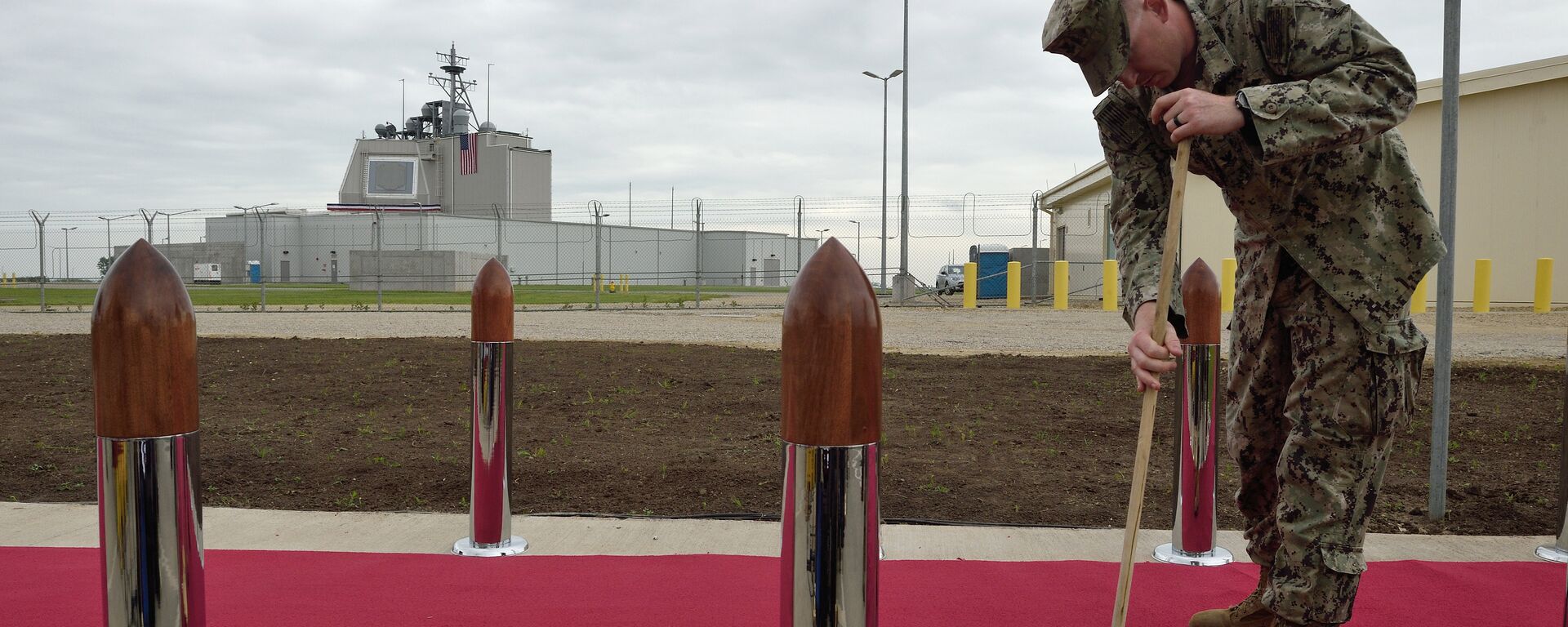
15 October 2022, 13:57 GMT
NATO’s Missile Defense in Europe Threatens Russia
Since 2014, the bloc has been focusing on enhancing its air and missile defense system in Eastern Europe, which is based on the US-made Aegis Weapon System (AWS).
This system was initially designed in 2009 to be situated close to Russia, creating concerns in Moscow due to the Aegis' launching capabilities. Although Washington previously stated that the system’s ballistic missile interceptors were directed towards Iran, repeated delays in the system’s implementation occurred in response to Russia’s objections.
On May 12, 2016, the Aegis Ashore missile defense site in Deveselu, Romania was declared operational. A similar site in Redzikowo, Poland, was accepted into service by the US Navy on December 15, 2023. It is due to become operational under NATO command by the summer of 2024. The Redzikowo Air Base is located just 93 miles from the Russian exclave of Kaliningrad. Besides the Romanian and Polish sites, NATO's European air defense shield relies on mobile Aegis systems on five Arleigh Burke-class destroyers stationed by the US Navy in Rota, Spain.
Since October 2022, Germany has spearheaded the creation of the
European Sky Shield Initiative (ESSI), an integrated air-defense and anti-missile system, with a clear reference to Russia as a "threat". While 19 European NATO members jumped on Berlin's bandwagon, France, Italy, Poland, Spain, and Turkiye have so far refrained from joining. The system would include Germany's IRIS-T, America's Patriot, and Israel's Arrow-3 systems and be integrated with NATO's existing defense shield. The Western press admits that the Arrow 3 poses a direct challenge to Russia due to the system's extended range and hypersonic capabilities.
NATO Expanding Presence in the Black and Baltic Seas
Having admitted Finland and Sweden, NATO has turned the Baltic Sea into the alliance's "lake." In addition, the military bloc has started to expand
the Romanian Air Force 57th Air Base Mihail Kogalniceanu which would accommodate up to 10,000 NATO soldiers, new runways and weapons platforms. Located near the Black Sea port of Constanta, the expanded base would be located around 80.1 miles from Ukraine's border and around 186 miles from the port city of Odessa.
Once the base is built, Crimea, the Sea of Azov and its coast as well as Russia's Krasnodar region would be within its striking range, Leonid Reshetnikov, a retired lieutenant general of Russia's Foreign Intelligence Service (SVR) warned Sputnik earlier this month.
"If you look at the map, the Black Sea is obviously a key strategic prize for NATO," said Szamuely. "I mean, they already have the Baltic Sea, they've got the Baltic Sea locked up and arrogantly in fact claiming that the Baltic is a NATO lake. And that was always the objective behind [the] Maidan [coup of 2014 in Ukraine]. Because the goal was not just to induct Ukraine into NATO, but to take the Black Sea. And they already have Romania, Bulgaria, Turkiye, then essentially, Russia is really pushed out into the east of the Black Sea and pretty much the Black Sea will largely become a NATO lake,"he said.
"And that was the goal of Victoria Nuland, that [the US] want[s] Crimea. That's why Russia's move in 2014 to ensure the reincorporation of Crimea into the Russian Federation was a major blow for NATO because that was always the prize," the researcher continued.
NATO's End Game: What is it?
"The overall goal is to diminish Russia as a great power," Szamuely highlighted. "I mean, if you already control the Baltics and then if you control the Black Sea, then Russia is much diminished. That's also part of the goal of why they're so eager to get Ukraine into NATO. Because then, essentially, Russia is surrounded by NATO's satellite states. And of course, they will become forward bases for NATO. And Russia is surrounded by a hostile military alliance and therefore is unable in any way to exert itself in the world."
Make no mistake, NATO's eastward expansion has never been an "answer" to Russia's "behavior" as the military bloc claims, but the alliance's long-term strategy which was implemented step-by-step starting from the end of the Cold War, according to Szamuely.
"Now, of course, it's a little different because after the war they know that whatever the final outcome will be, Russia will extend its control of the Black Sea coastline. Now, they already have some of that because they control the southeast of Ukraine. (…) If [Russia] take[s] Odessa and they build a kind of a landline through to Transnistria, then, of course, the plan to control the Black Sea will have been destroyed," the expert said.
Russia Has No Incentive to Attack NATO
Despite the Biden administration and NATO leaders claiming that Moscow is eager to attack the alliance's member states if it is "allowed" to win in Ukraine, Russia clearly does not harbor any plans of that kind, according to the scholar.
The West's outlandish assertion is "the only way that they can persuade the public to support a foreign policy that the public obviously doesn't support," Szamuely explained, adding that "it hasn't been very successful so far."
"They have to present it in a way that Russia is the aggressor, whereas in fact, the reality, and this was obviously kept very much away from the public, the reality is that this war was provoked by NATO expansion. It was NATO that was acting in an aggressive way, it was NATO that pushed its borders right up against Russia, it was NATO that wanted to incorporate so many satellite states within its borders. And indeed, this is NATO that is building this huge air base near Constanta," the researcher concluded.
